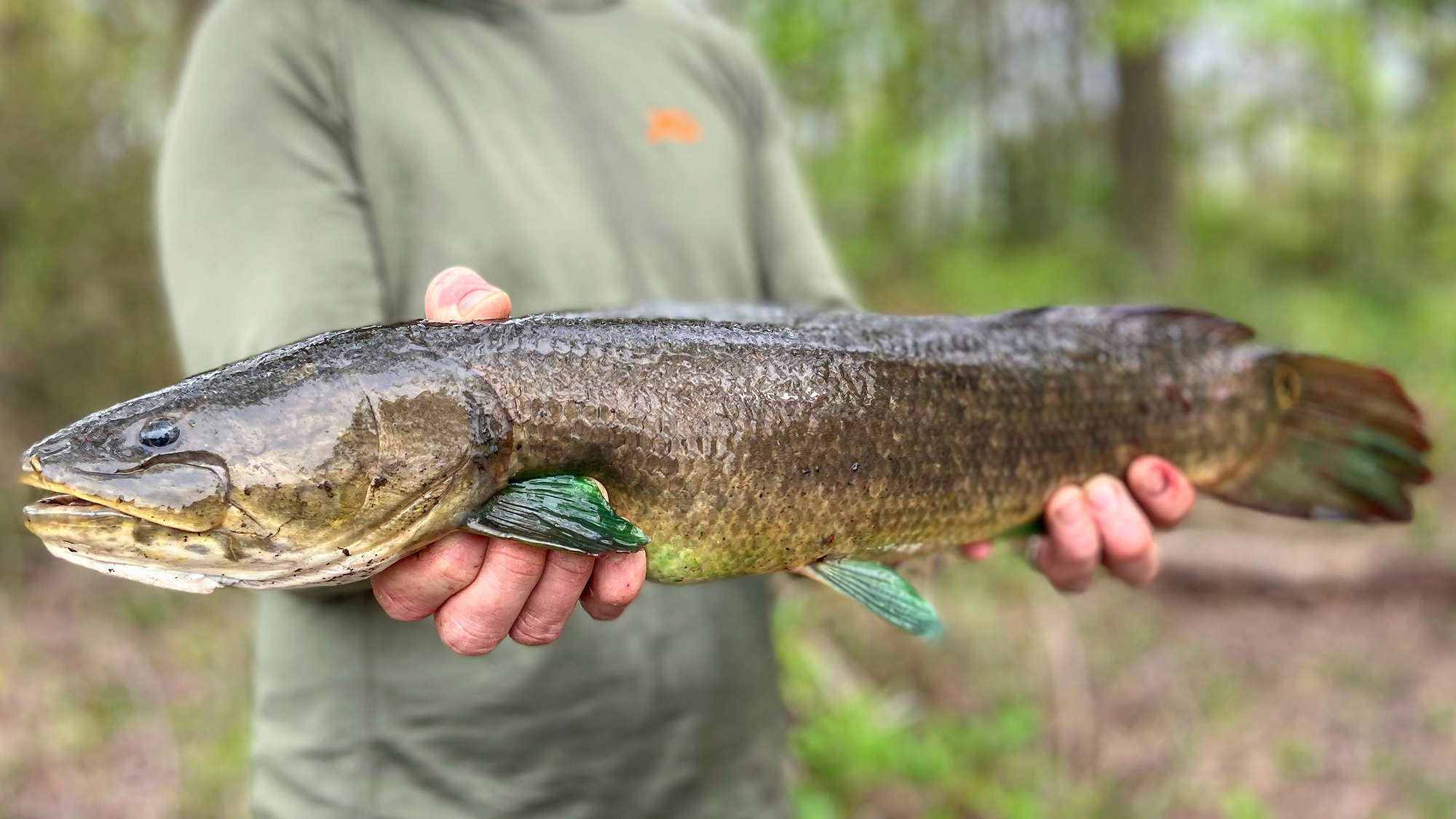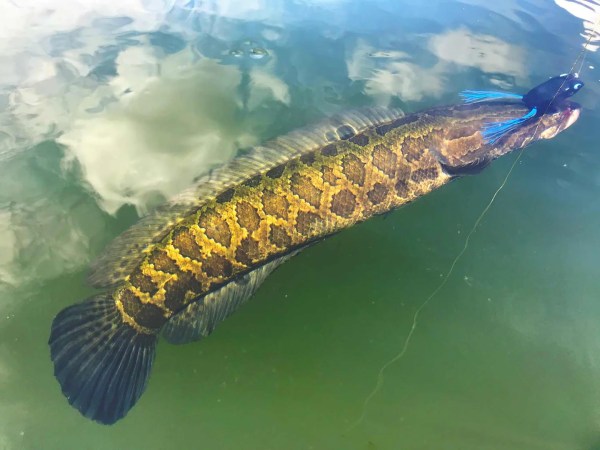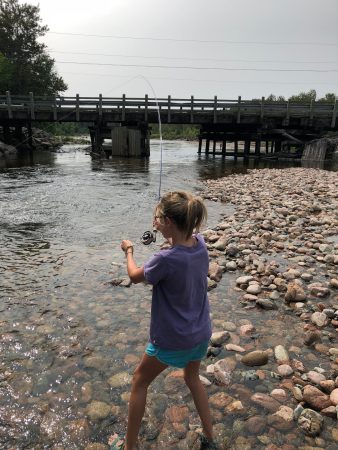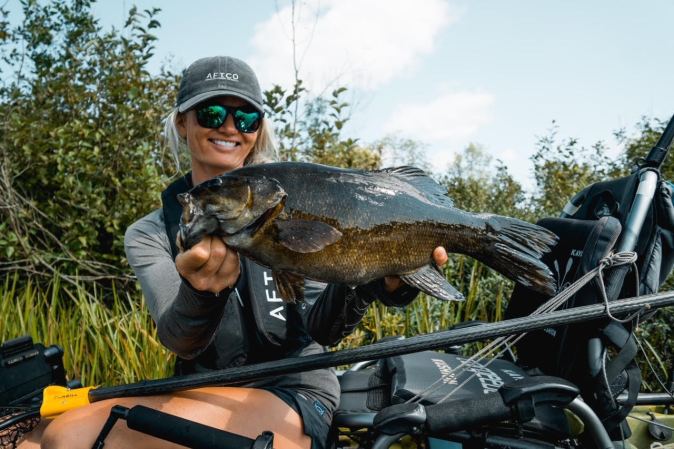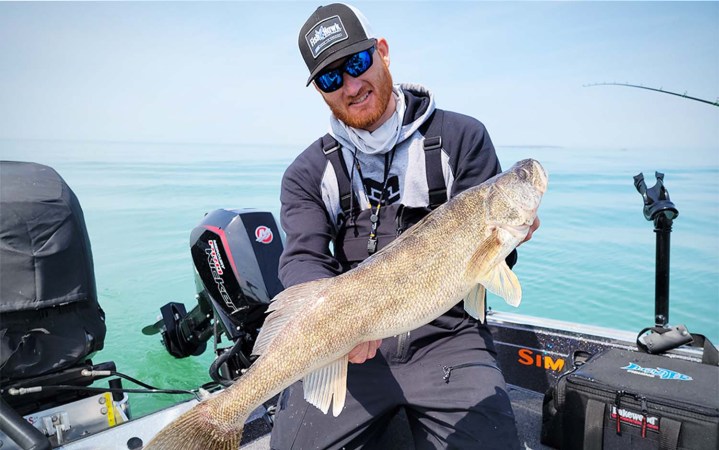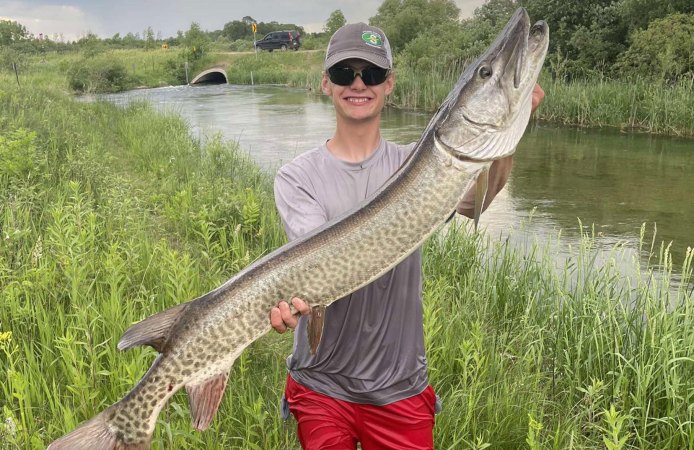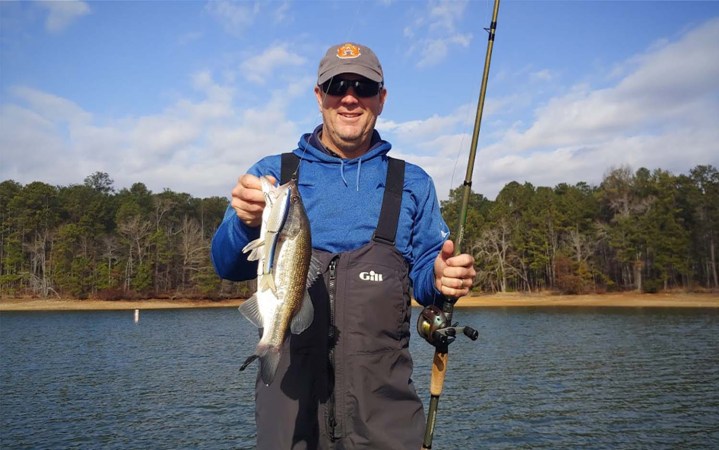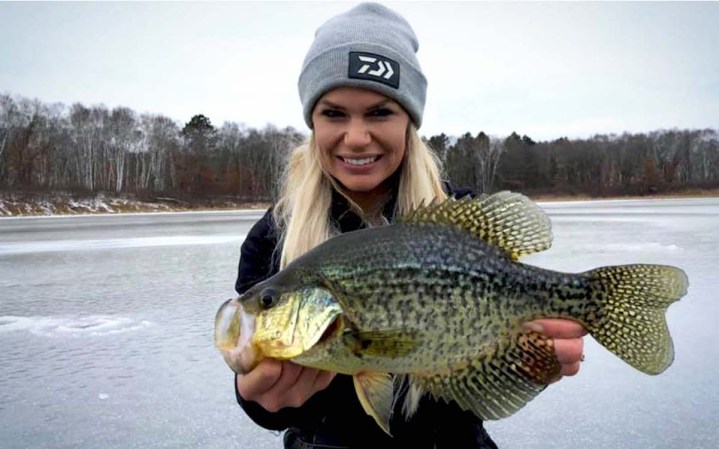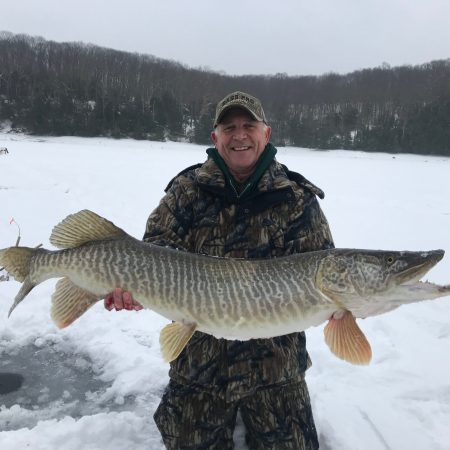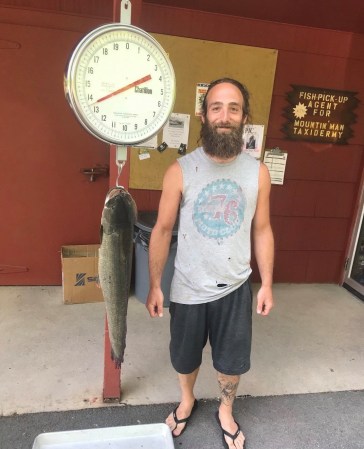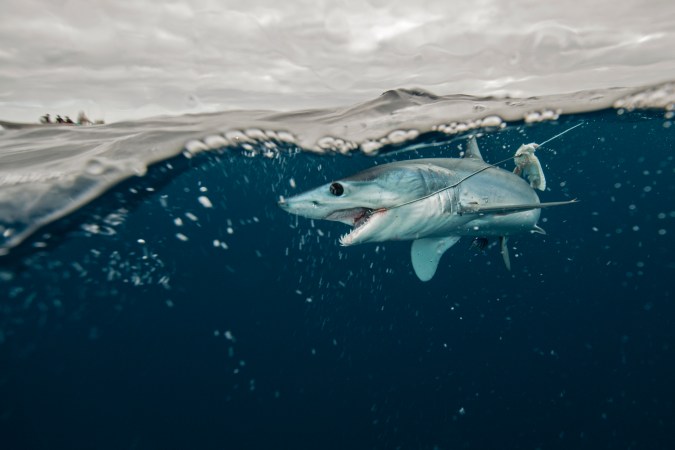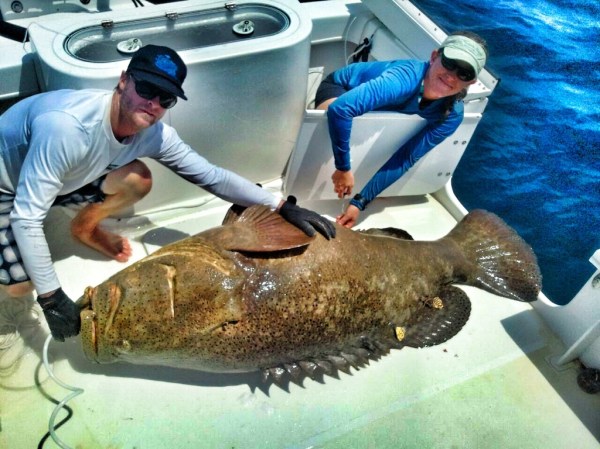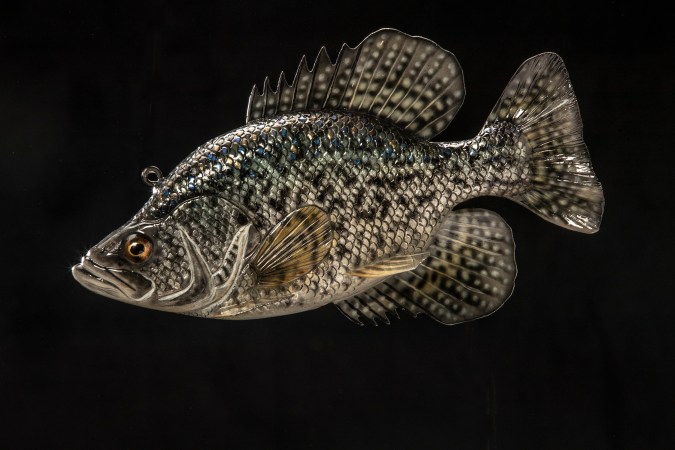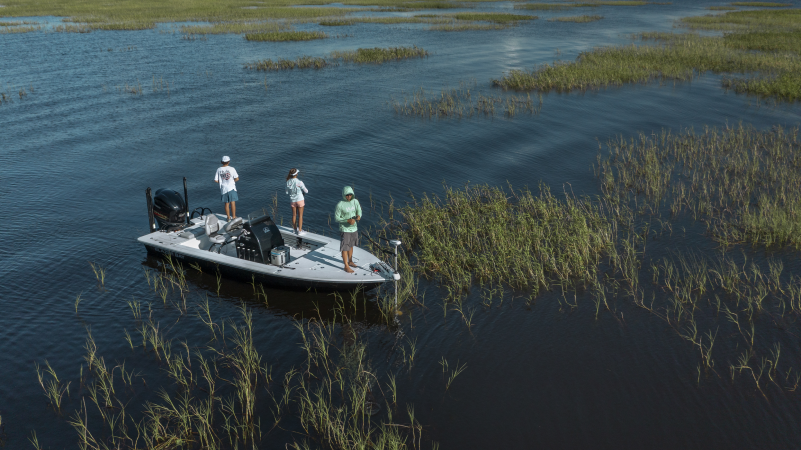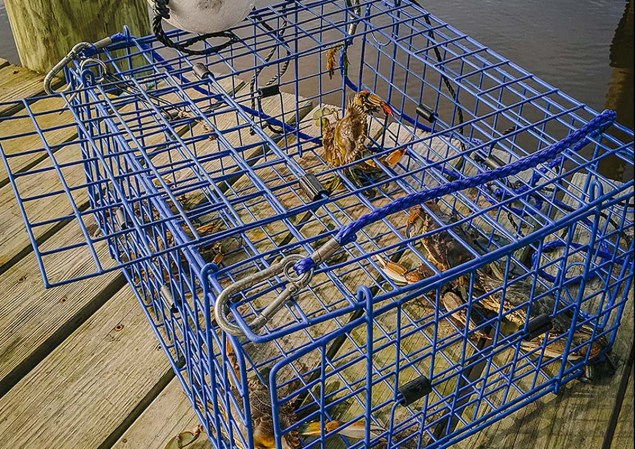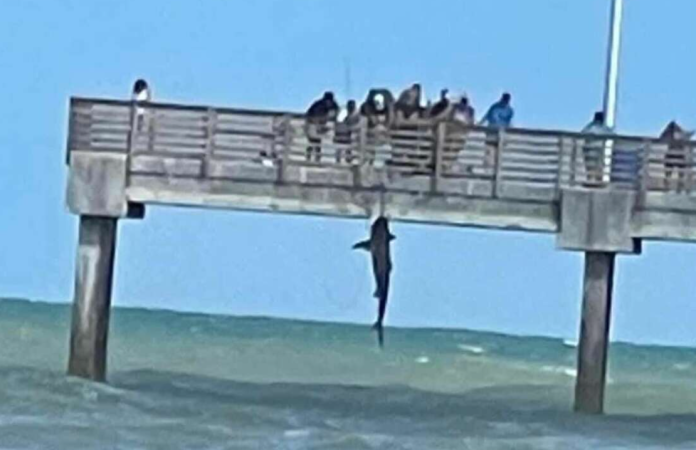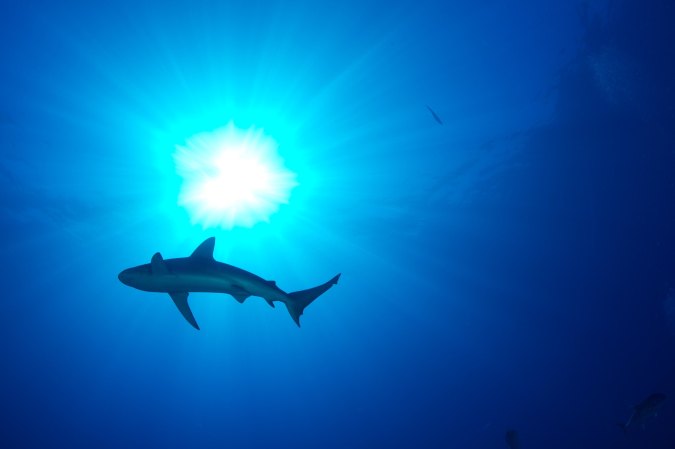IF YOU DIDN’T know better, you may have assumed the fish was dead. You could have easily walked by it, a passing glance convincing you it was just a rotten log. Its dull gray back is the same color as the mud. It camouflages beautifully with the detritus on the bottom of a shallow swamp in early spring before the lilies bloom and inject it with fresh greenery. Look closer, though, and the fish takes shape. It’s lying perfectly still save for the dorsal fin that runs nearly the length of its back. Like the lines on a heartbeat monitor, the fin ripples in undulating waves that start near the head and flow back to the tail. I cast a white tube a few feet past the fish and let it settle. The target doesn’t flinch. I hop the lure a little closer. No movement. Closer still, but there’s no reaction. The next hop will drop the tube right on its nose and I brace myself to swing. When it lands, the seemingly comatose fish erupts like a bullet, sucking up the bait with such force and violence that I swear you can hear the vacuum and snap of its jaws coming together on dry land. It’s that reaction, that moment, that made me fall in love with bowfins, a historically maligned species that’s creeping its way into the limelight.
Chasing Dino DNA
Bowfin are a fish of many names. In the deep South, they’re called choupique (pronounced shoe pick). In Middle America, they’re mudfish. In the North and into Canada, they’re grinnel. Dogfish, mud pike, swamp trout: The list goes on and on, but while the names might vary by region, what these fish have always shared across their vast range is a lack of respect and general disinterest as a rod-and-reel target. If anything, they are merely by-catch to be tossed up on a bank and left to die. In many regions, in fact, it is widely believed and accepted that a bowfin’s sole purpose is to kill mass quantities of more desirable species like bass and crappies.
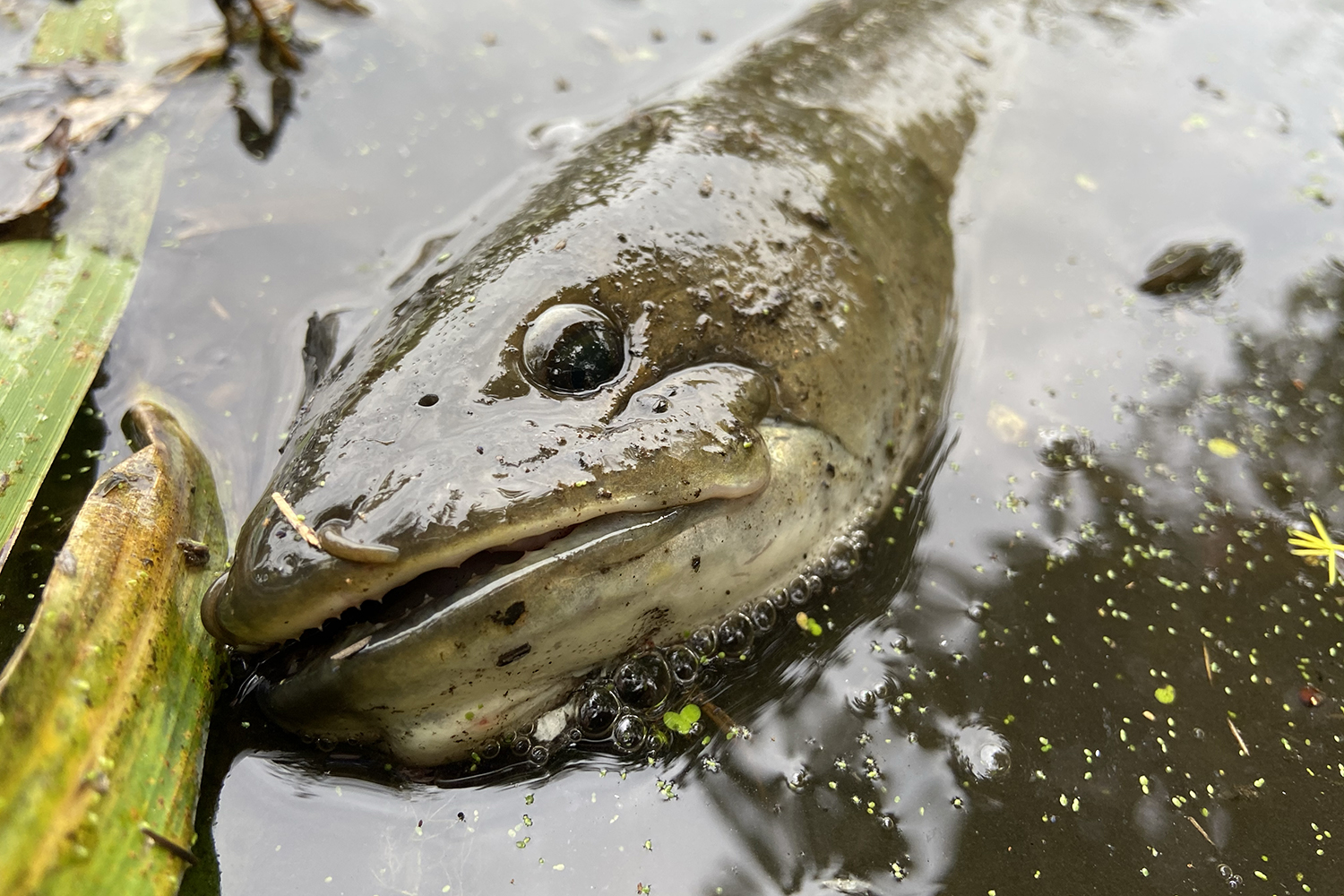
Except within a few niche groups and cultures, bowfins have little value as table fare. Their flesh, so I’ve been told, turns mushy very quickly after the fish dies, and even when cooked quickly it often has an overwhelmingly muddy flavor. Still, anglers aren’t inclined to dispose of other by-catch species, so why bowfins? It’s difficult to deny that they have a reputation for being nasty. They evoke a bit of fear, much like spiders, which many people instinctually squish under their shoe without knowing what kind it is, or if it can cause any harm. The reality is that bowfins, like spiders, do more good than harm to an ecosystem. They may be a little mean. But they’ve had to be to survive this long, and it’s their meanness that makes them such worthy opponents.
In 2021, a research team from Harvard University made a fascinating discovery. By studying bowfins from around the country, they determined that there are actually two lineages of these fish swimming in our waters. Previously, scientists had believed that all bowfins were genetically identical and had remained relatively unchanged since they first appeared during the Triassic period nearly 250 million years ago. While the differences between the two species may not be easily recognizable to the untrained eye, the discovery of the two lines has been a catalyst for more research, which brings with it more protections for the fish. And make no mistake, that research is the equivalent of studying living dinosaurs à la Jurassic Park because bowfins are, indeed, dinosaurs.
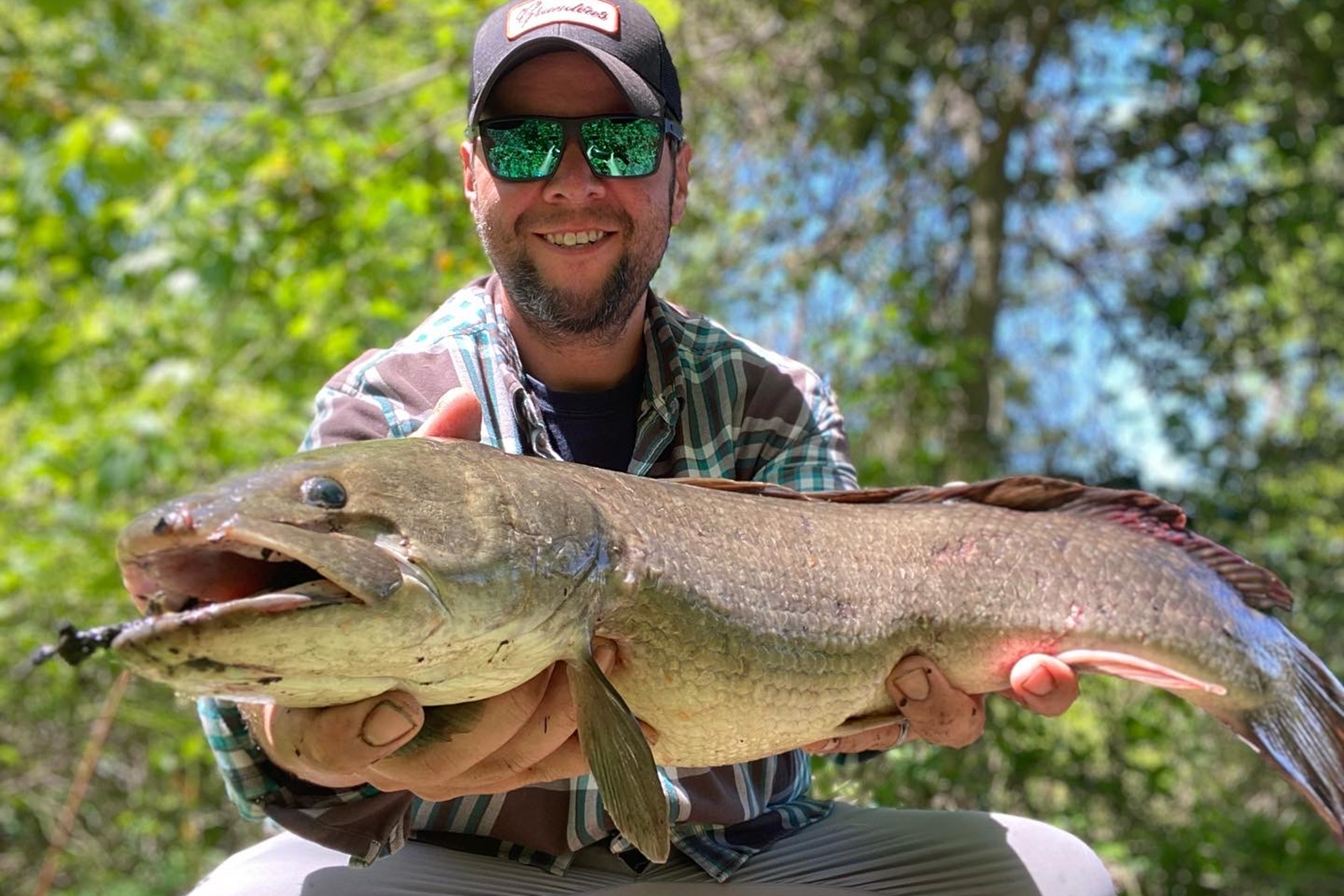
They have immense jaw power, arguably making them stronger than all other freshwater fish in North America. Rows of conical teeth angle backward toward the throat to ensure nothing they clamp down on gets away. A bowfin’s skull is as thick and hard as granite. They can extract oxygen from the water through their gills or let their tubular nostrils protrude above the surface and breathe air. Combine that ability with their tough exterior and tenacity and it helps explain why come hell, high water, drought, or even pollution, bowfins have endured. It’s also that engineering and resilience that makes these fish more interesting to me than many other nonnative glam species. I’m certainly not the only one who feels this way.
Clever Girls
According to Drew Price, a veteran guide on Lake Champlain who specializes in targeting trophy bowfins, these fish have also survived for millions of years because they’re smart—much smarter, in fact, than many fish we routinely put on a pedestal for their alleged brain power.
“I love brown trout,” Price tells me. “I love to fish for them, but while they’re selective and spooky, they’re not smart. But bowfin have a natural curiosity, and animals that have that are exhibiting intelligence. A fish that will swim up to a boat to see what it is, or swim over when it hears something splashing, is intelligent. I’ve had bowfins look me straight in the eyes.”
That curiosity is what led Price to develop what he calls his “splash-bang” technique. While plying Champlain’s coves and shallows in his skiff or canoe, he’ll splash the water with his pushpole and even tap the sides of the hull. Quite often the bowfins will swarm. Though Price will use conventional tackle on occasion, his true passion and specialty is fly fishing. He’s even led clients to tippet-class record fish, since Champlain, because of its size, depth, and cold winters, grows bigger bowfin than many other waters.
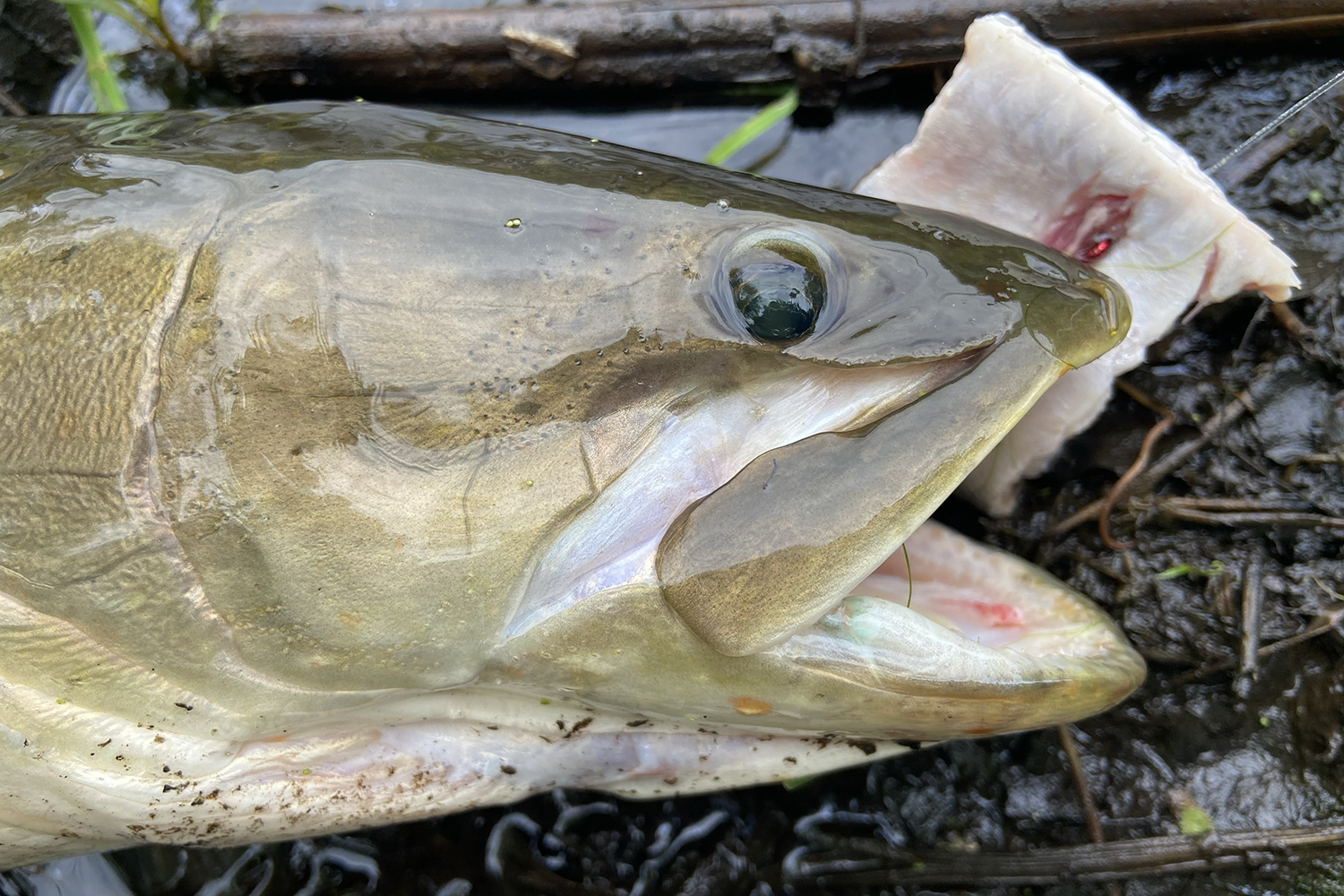
Price has been singing the praises of bowfin for nearly 20 years, though it’s been only within the last 10 that people have started to listen. His reputation as one of the leading bowfin advocates in the country was made when he guided Jeremy Wade on River Monsters in 2013. That led to a slew of other show appearances, including on the Orvis podcast, after famed fly angler and instructor Tom Rosenbauer developed a bowfin jones after hanging out with Price. Although Price has been a guide for hire since 2008, he’s seen a noticeable uptick in bowfin bookings over the past few years.
Price attributes the spark in interest to several factors. We’ve seen that angler obsession with sight-fishing grows when social media is flooded with sexy drone shots of rising trout, pike trashing poppers, and giant trevallies charging across flats to smoke a streamer. Bowfin, however, provide that sight-fishing rush for far less money and a lot less time in the air. It also doesn’t hurt that they’re challenging. Sticking a hook in their rock-hard jaws takes skill. When you do stick it, buckle up, because bowfins don’t quit. They will snap rods. They will bend hooks. And even in the net, a bowfin will look at you “with malice in its eyes,” as Price puts it. Ultimately, though, Price believes it’s the gradual reckoning with the importance of preserving heritage in nature that is flipping the tide in the bowfin’s favor.
“Bowfins are probably the most American fish out there,” he says. “They have been here longer than any other species. They have remained unchanged since the Cretaceous period. I think people are beginning to appreciate native species and what they have to offer.”
I wholeheartedly agree with Price, but I believe it’s only one aspect of the bowfin’s unfolding success story. The other is rooted, for better or worse, in increased angling pressure.
Hidden in Plain View
The cover of the February-March 2021 issue of Fly Fisherman magazine featured a shot of renowned fly angler and tier Blane Chocklett lifting a massive bowfin out of the water. The main text on the cover read, “Exotic Species in Your Backyard.” At a time when media seems to push us to drool over far-flung destinations we’ll likely never visit, I found this sentiment poignant. I’ve always preached that you can’t call yourself a true angler if you only travel to fish and snub your nose at what’s right down the street. The angling opportunities in your backyard, whether they’re world class or mediocre at best, should be what defines you, not the fancy places you’ve traveled to. The funny thing is, bowfin live in a lot of backyards, including my own, but it took me about 30 years to find them.
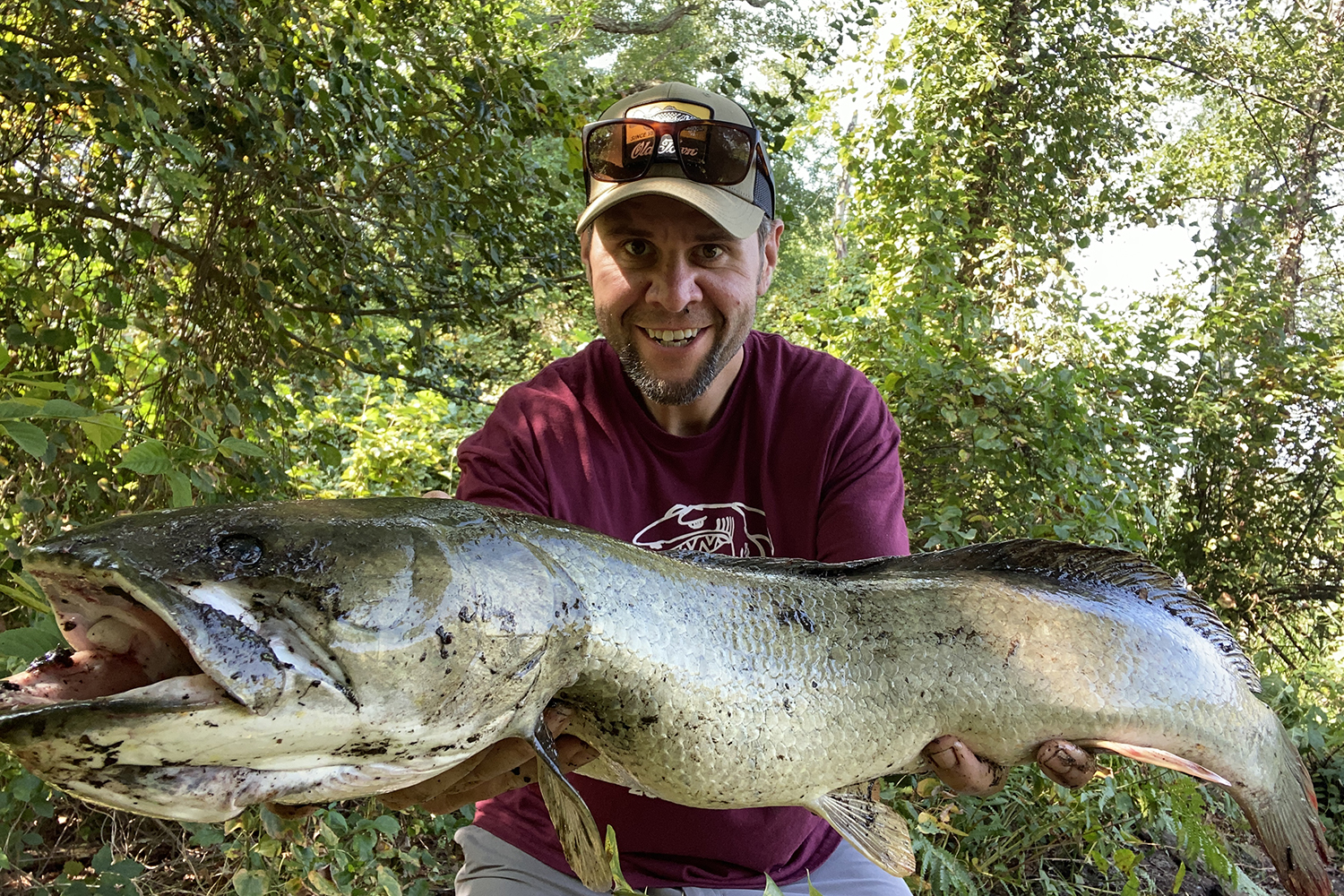
As a kid growing up in the ’80s and ’90s, bowfins weren’t on my radar. The only recollection I have of seeing any media devoted to them during those formative years was on a TNN fishing show shot on Lake Champlain. It didn’t particularly resonate with me because I viewed them as something I couldn’t catch. But they were. And they were right under my nose.
In many parts of the country, bowfins live on the fringes. To use my home water, the Delaware River, as an example, the state fishing compendium has always listed them as an available species, but in all my years wading for smallmouths with my dad and fishing for shad with my grandfather, we never saw or caught a bowfin. The listing seemed to me to be honorary, or historical—yes, bowfin were recorded here at some point, but there were probably only a few kicking around. The truth was there were plenty of them, but the odds of catching one in the main river were slim. They existed in pockets far up tributary arms and in vast tidally influenced swamps and floodplains that were difficult to access. Even if you could, why would you? Mucky, skinny, weed-choked water isn’t exactly prime for bass, or catfish, or crappies. I had no reason to trudge around in the mire while I was growing up. Then along came the dreaded invasive snakehead and suddenly I did.
Snake Charmed
Steve Cahn is the owner of High Octane Custom Lures, a Maryland–based company that got off the ground in 2019. Recognizing a growing interest in snakeheads among anglers in the Delmarva region, Cahn decided the timing was right to launch a line of lures aimed specifically at this market. The overriding theme of his products is toughness. His version of the Chatterbait, as an example, features stronger hooks, thicker wire, and more durable skirt material than the Chatterbaits already hanging on pegs in tackle shops. Business was slow at first, and then along came the Covid pandemic and everything changed.
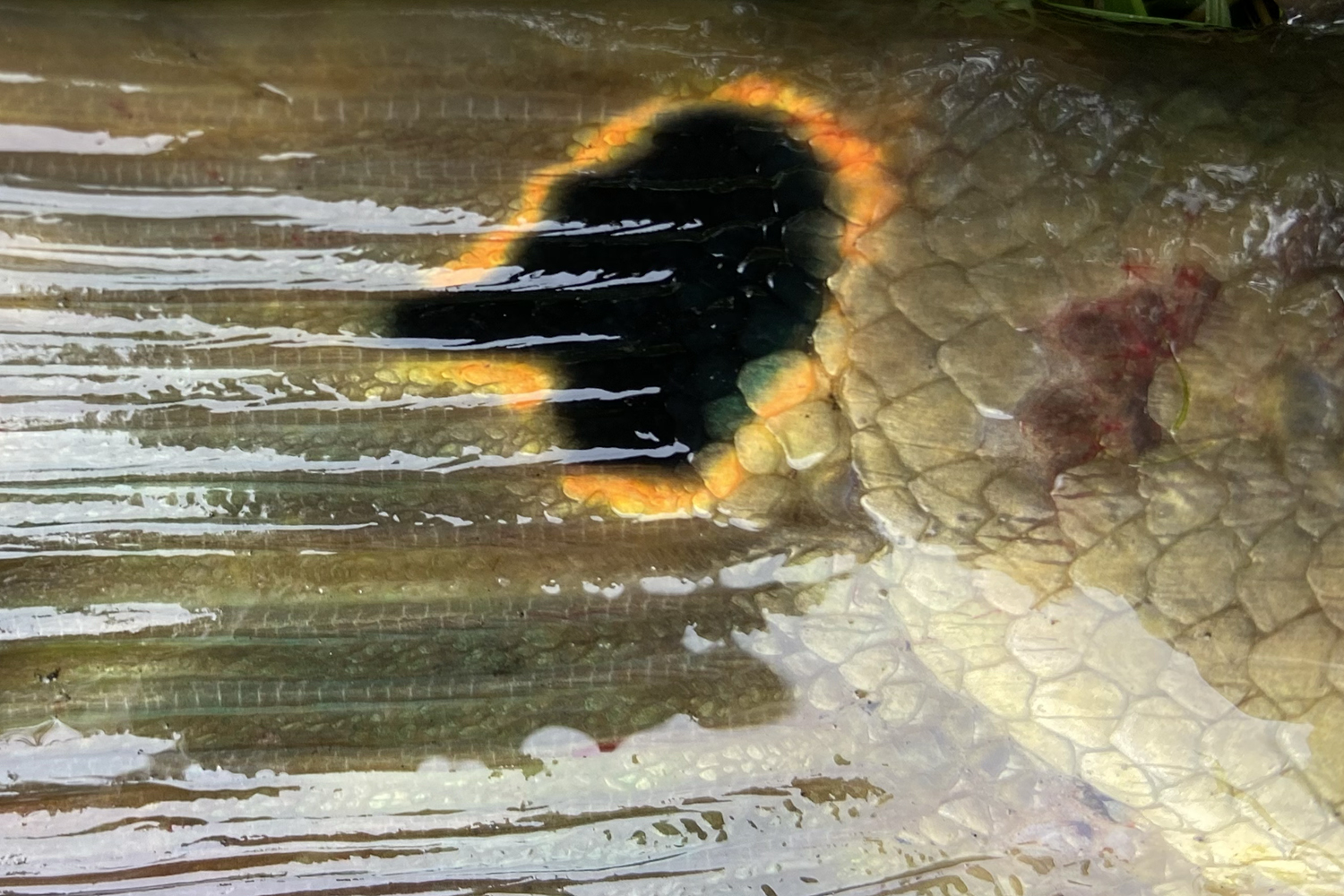
For the next two years government entities prodded people to get outside. Don’t go to a party or social gathering, go out alone and explore nature. And explore they did. The bump in recreational fishing interest during that time was unprecedented, and many anglers living in the Mid-Atlantic and lower Northeast who previously may have been lukewarm to or uninterested in snakeheads saw the light. As pressure increased during the pandemic at local fishing holes, grabbing a kayak or trudging through the mud to get away from people suddenly became extremely appealing. The byproduct of this vigor for the swamp life was that more and more anglers were ending up in bowfin territory, and these fish were happy to hit the same frogs and spinnerbaits intended for snakeheads. Cahn’s business spiked so quickly that at one point he had to shut down his website to catch up on orders.
Read Next: How to Catch Snakeheads
“I have absolutely seen an increase in bowfin interest over the past few years,” says Cahn. “I’ve personally developed a greater love for bowfins since I started seriously snakehead fishing. I’d even say they fight harder than snakeheads, and once people started to figure that out, bowfin just sort of went hand in hand with snakeheads. Anglers were equally happy to stick either one.”
That’s how it broke down for me, too—it’s just that it happened years before the pandemic. I fell in love with snakeheads, and as soon as the first bowfin blasted my frog, I fell in love with them, too. At the time, chasing these fish felt very underground. It was almost too easy at times because pressure was minimal. The irony is that had I known about my local bowfin population as kid, I might have experienced near-zero pressure Shangri-La. Now, I can’t help but notice that it’s getting tougher and tougher to consistently catch bowfins in spots that were fire on the regular just four or five years ago. Such is the case up and down the East Coast, and it turned out that snakeheads were both a blessing and a curse for bowfins.
Identity Crisis
When snakeheads were first discovered in Maryland in the early 2000s, it created a media firestorm. The destructiveness of the fish was so overhyped, so much fear was created around them, that anglers felt they had to do their part in the snakehead war. The problem was that bowfins and snakeheads looked similar. In time, mistaken identity became a legitimate problem. It wasn’t uncommon to see forum and social media posts of bowfins from captors who were looking to confirm if what they’d caught was a snakehead. In some cases, they cut the head off the fish first and asked questions later. For folks like me who went all-in on targeting snakeheads and bowfins, the idea of confusing the two species seemed ludicrous, because while their body types are similar, their fin structure, head shape, and coloration are very different. Still, to be blunt, there were enough anglers out there unwilling to educate themselves that over time, state wildlife agencies began posting signs at public accesses pointing out the differences between the two fish. The silver lining was that despite it taking an invasive species to cast some light on native bowfins, for the first time in many years they were creeping back into the conservation forefront.
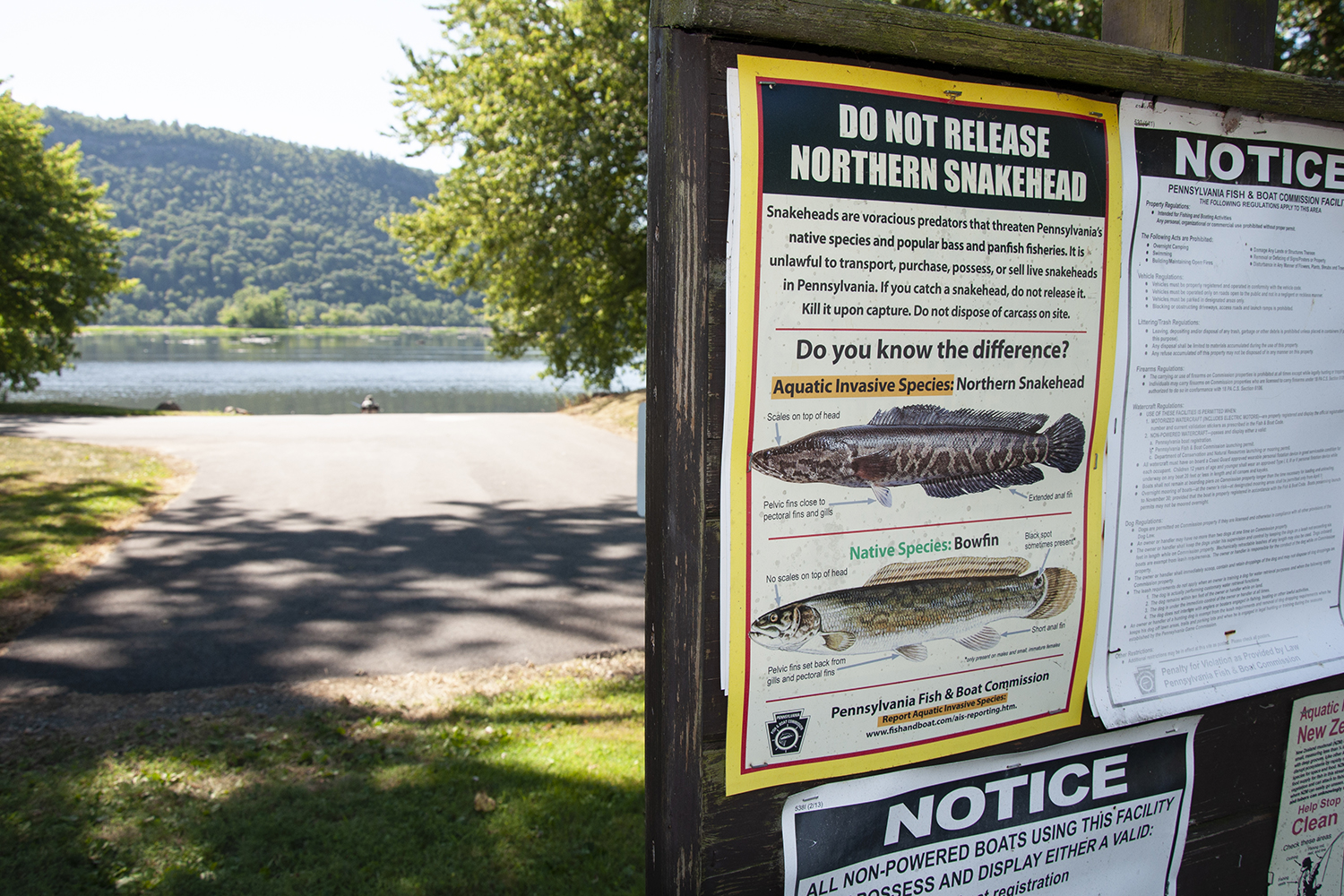
The most critical conservation measure in the future of bowfin was already in place in most of the states posting the signs. In New Jersey and Pennsylvania specifically, it was illegal to shoot bowfins with arrows. They were afforded this protection prior to the snakehead influx because they were a native species. In the dark, however, in the heat of the moment, parsing out what’s a bowfin and what’s a snakehead when you’ve got an arrow nocked and a second to fire proved challenging for some shooters. Meanwhile, on Lake Champlain and elsewhere throughout the bowfin’s range, they are fair game for bowfishermen.
Nothing worries Drew Price more about the future of Champlain’s bowfin population than the local bowfishing community, which is why he and many other defenders of “trash fish” throughout the country share data, attend meetings, and do whatever they can to profess the importance of these fish within the ecosystem.
It’s ironic that bowfins have come to be associated with dirty, mucky water, since it only fuels the notion that they’re worthless fish living in squalor. The reality is that a healthy bowfin population points to a healthy ecosystem. These fish, like many gamefish we love, need fertile vegetation to spawn. They need an abundance of small prey to survive. They need weed cover to rear their young. Bowfins are so tough and can withstand so much that if a population naturally declines, a much worse picture for the watershed emerges than if they’re thriving.
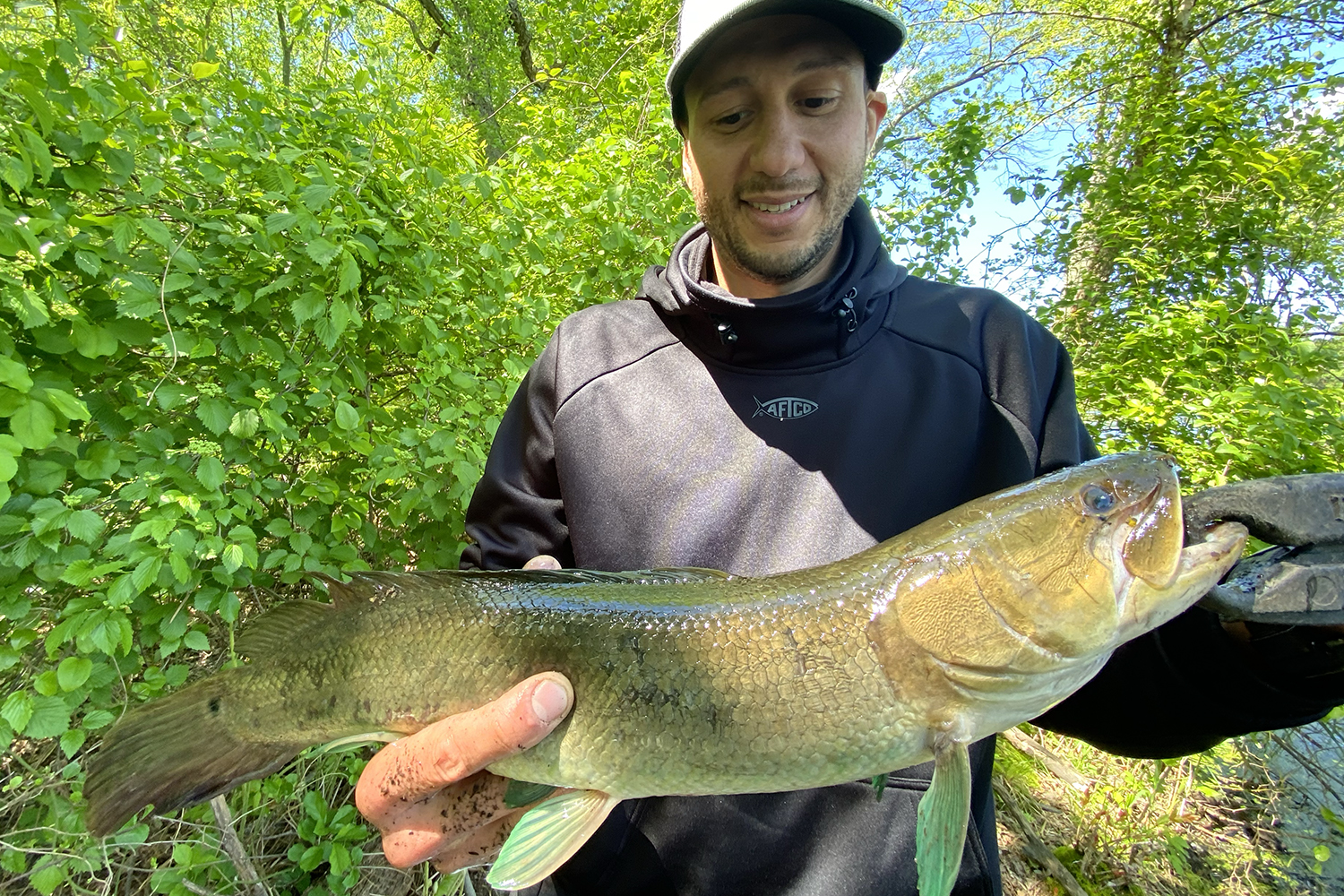
Luckily, the champions for these fish continue to grow. Price, Cahn, and I are just a few. Dr. Solomon David, a biologist at Louisiana’s Nicholls State University, has worked tirelessly for years to get a better understanding of the role these fish play in ecosystems in the Midwest. David Graham, host of the Boundless Pursuit podcast, has been chasing bowfins across the Carolinas and Florida for decades, penning countless articles on the species and sharing his knowledge of their behavior. Even YouTube, as much as we love to rag on it for spot burning and calling too much attention to certain fisheries, is generating positive vibes about a largely overlooked and underregulated species. Years ago, when largemouth bass ruled the television airwaves, an inadvertent bowfin catch likely wouldn’t even make it on the show. Today, between dedicated backwater enthusiasts and even bass-focused content creators willing to break the mold, the bowfin is finally getting a lot more media respect.
Read Next: The Best Spinning Rods, Tested and Reviewed
The truth, however, is that you don’t need to become enamored with targeting bowfins to help these fish thrive. More than anything, you just need to recognize that they’ve been here longer than any other fish, and that alone—that ability to survive—should garner enough reverence to at least not want to kill them for no reason.
But if you do want to challenge yourself against these dinosaurs, the beauty of them is you can make that pursuit as hardcore or relaxed as you like. A simple piece of shrimp or shad or even hotdog (I’ve been told) will be sniffed out in short order. I’d recommend a 30-pound leader and a saltwater-grade hook, though. Take the hardest fight you remember with a bass that ate your live shiner, or the toughest battle you ever had with a big channel catfish, and multiply it times five. That’s the bowfin. And whether you become obsessed with catching them or just want to say you gave it a shot, you won’t forget that first one.
This story first ran on March 28, 2023.

